A standard 1963 dime with “D” mint mark (Denver) or no mint mark (Philadelphia) is worth $4-$4.55 in circulated condition based on silver content, with uncirculated versions valued higher. Error coins like off-center strikes can fetch $10-$20, while clipped planchets may reach $30 in mint state. The coin’s value primarily depends on its condition and the presence of minting errors such as misaligned strikes or missing sections. For accurate appraisal, consult professional coin appraisers or use resources like the NGC Price Guide to determine your 1963 dime’s actual worth.
That 1963 Roosevelt dime sitting in your drawer might be worth more than ten cents. While most examples trade for their silver content of around $4 to $4.55, certain specimens—particularly those in pristine condition or bearing minting errors—can command significantly higher premiums from collectors. Understanding the difference between a common circulated piece and a valuable error coin could mean discovering a $30, $100, or even $4,500 treasure hiding in plain sight.
Understanding the 1963 Roosevelt Dime Production
The United States Mint produced Roosevelt dimes at two facilities in 1963: Philadelphia (no mint mark) and Denver (marked with a “D” on the reverse, just above the base of the torch). Both versions contain 90% silver and 10% copper, weighing 2.5 grams with a diameter of 17.9 millimeters. This silver composition makes them inherently more valuable than modern clad dimes, regardless of condition.
Philadelphia struck 126,725,645 dimes without a mint mark in 1963, while Denver produced 421,476,530 pieces with the “D” designation. These substantial mintage figures mean neither version qualifies as rare from a population standpoint. However, the vast majority entered circulation and acquired wear over the decades, making high-grade uncirculated specimens considerably scarcer than the mintage numbers suggest.
The “D” mint mark appears on the reverse side, positioned directly above the flame portion of the torch and between the bases of the olive branch and oak branch. Its presence or absence represents the only design difference between the two varieties, with both featuring John R. Sinnock’s profile of President Franklin D. Roosevelt on the obverse.
Standard 1963 Dime Values by Condition and Mint Mark
For collectors evaluating standard strike 1963 dimes without errors, condition determines everything beyond the baseline silver value. Here’s what the current market shows for both varieties:
1963 Philadelphia (No Mint Mark) Values:
| Grade | Condition Description | Value Range |
|---|---|---|
| Good (G-4) | Heavy wear, major details visible | $4.00-$4.25 |
| Fine (F-12) | Moderate wear on high points | $4.15-$4.40 |
| Extremely Fine (EF-40) | Light wear on highest points only | $4.30-$4.55 |
| About Uncirculated (AU-50) | Traces of wear, nearly full mint luster | $4.50-$5.00 |
| Mint State (MS-60) | No wear but poor luster or marks | $6.00-$8.00 |
| Mint State (MS-65) | Excellent luster, minimal marks | $15.00-$25.00 |
| Mint State (MS-67) | Exceptional quality, rare grade | $125.00-$275.00 |
1963-D Denver (With “D” Mint Mark) Values:
| Grade | Condition Description | Value Range |
|---|---|---|
| Good (G-4) | Heavy wear, major details visible | $4.00-$4.25 |
| Fine (F-12) | Moderate wear on high points | $4.15-$4.40 |
| Extremely Fine (EF-40) | Light wear on highest points only | $4.30-$4.55 |
| About Uncirculated (AU-50) | Traces of wear, nearly full mint luster | $4.50-$5.00 |
| Mint State (MS-60) | No wear but poor luster or marks | $5.50-$7.50 |
| Mint State (MS-65) | Excellent luster, minimal marks | $12.00-$20.00 |
| Mint State (MS-67) | Exceptional quality | $90.00-$200.00 |
A 1963-D Roosevelt dime graded MS-68 by Professional Coin Grading Service sold through Heritage Auctions in 2019 for $4,500, demonstrating the dramatic premium attached to coins in essentially perfect condition. Only a handful of 1963 dimes have achieved this elite preservation grade, as the vast majority saw circulation or acquired bag marks during storage.
The Philadelphia version typically commands slightly higher premiums in uncirculated grades compared to the Denver issue, despite the lower mintage of the latter. This price difference stems from collector preferences rather than true scarcity, as both versions exist in similar proportions at high grade levels.
Complete Error Types Found on 1963 Dimes
Minting errors transform otherwise common coins into collectible anomalies. While 1963 dimes don’t feature famous die varieties like doubled dies, several mechanical error types exist and carry substantial premiums.
Off-Center Strikes occur when the blank planchet doesn’t align properly with the striking dies. The resulting coin shows only a partial design, with a crescent-shaped section of plain metal visible. A 1963 dime struck 10% off-center typically sells for $15 to $30 in circulated condition, while pieces struck 25% or more off-center command $40 to $75. Extreme examples showing 50% or greater misalignment, while still displaying a complete date, can reach $150 to $300 depending on the appeal of the error. The most valuable off-center strikes retain the full date and mint mark despite the misalignment.
Clipped Planchets result from improperly fed metal strips during the blanking process. When the cutting dies overlap previously punched holes, the resulting blank shows a missing section. Straight clips along the edge typically add $15 to $25 in value, while curved clips (appearing elliptical or crescent-shaped) command $20 to $35 for 1963 examples in average circulated condition. Mint state specimens with dramatic clips can reach $75 to $125. Multiple clips on a single coin increase value substantially, with double-clipped 1963 dimes selling for $100 to $200 when well-preserved.
Broadstrikes happen when the retaining collar that normally shapes the coin’s edge fails to engage during striking. The resulting dime measures larger than the standard 17.9 millimeters and lacks the defined reeded edge. These errors typically add $35 to $65 in value for 1963 examples, with particularly dramatic specimens reaching $100 to $150 in mint state condition.
Wrong Planchet Errors represent some of the most valuable mistakes. A 1963 dime struck on a cent planchet (copper, weighing approximately 3.11 grams for this era) could command $500 to $1,500 depending on strike quality and preservation. Similarly, dimes struck on foreign planchets or planchets intended for other denominations create significant collector interest, though such errors remain extremely rare for 1963 issues.
Die Breaks and Cuds appear as raised irregular areas on struck coins, caused by damaged or cracked dies. Small die breaks add modest premiums of $5 to $15, while major cuds (large raised areas typically at the rim where a chunk of die has fallen away) can bring $40 to $100 for 1963 examples. The size, location, and visual appeal of the cud determine its premium.
Struck Through Errors occur when foreign material comes between the die and planchet during striking. Grease-filled dies create weakly struck areas, generally adding only $3 to $8 in value. More dramatic struck-through errors involving cloth, wire fragments, or other debris can command $25 to $75 depending on the size and clarity of the impression.
Identifying Genuine Errors Versus Damage
Many coin owners mistake post-mint damage for valuable minting errors. Learning to distinguish authentic errors from damage prevents costly mistakes and disappointment.
Genuine minting errors occur during the production process at the mint and show characteristics impossible to replicate through handling. Off-center strikes display unstruck areas with the same luster and color as struck portions—the blank areas haven’t been exposed to circulation or environmental damage. The visible design elements appear properly struck within the portion that contacted the dies.
Clipped planchets show smooth, curved edges at the clip site that match the rest of the rim’s finish. Post-mint notches or cuts display irregular edges, often with deformation, scratching, or color differences. A true clipped planchet was never complete, while damage removes metal from what was once a whole coin.
Broadstrikes measure consistently larger than standard across the entire diameter, with thin but complete design transfer. The edge appears flat and smooth rather than reeded. Coins that appear enlarged due to bending or spreading show uneven thickness, distorted designs, and typically display reeding remnants or irregular edge characteristics.
Environmental damage creates the most common false errors. Chemical reactions produce discoloration, corrosion, and surface changes that inexperienced collectors sometimes mistake for rare varieties. Genuine mint varieties show consistent characteristics across multiple known examples and match documented error types. When in doubt, professional authentication through PCGS or NGC provides definitive answers and adds value through third-party verification.
Grading Standards That Impact Your Dime’s Value
Professional grading uses the 70-point Sheldon Scale, but understanding a few key grade levels helps collectors estimate value without expensive certification for common coins.
Circulated grades range from Poor (P-1) through About Uncirculated (AU-58). For 1963 dimes, most worn examples fall between Good (G-4) and Extremely Fine (EF-45). At G-4, Roosevelt’s profile shows as an outline with major details visible but worn smooth. The torch, olive branch, and oak branch remain identifiable but lack internal details. At F-12, moderate detail returns to Roosevelt’s hair and facial features, while the torch flame shows separation from the surrounding areas. EF-40 specimens retain sharp detail across most of the design with light wear only on the highest points: Roosevelt’s cheekbone and hair above the ear, plus the torch’s flame and branch details.
About Uncirculated grades (AU-50 through AU-58) show only trace wear on the absolute highest points. Under magnification, these coins retain 90% or more of their original mint luster in protected areas. The transition from AU-58 to Mint State represents a crucial value threshold, sometimes tripling a coin’s worth.
Mint State grades (MS-60 through MS-70) describe coins with no wear from circulation. However, bag marks, contact marks, and quality of strike create vast value differences within this range. MS-60 through MS-62 coins show numerous distracting marks, weak luster, or strike weakness. MS-63 represents the baseline for “nice” uncirculated coins, with moderate marks and good eye appeal. MS-65 dimes display strong luster, sharp strikes, and only minor marks visible under magnification. MS-67 and higher represent condition rarities with essentially perfect surfaces and strike.
For 1963 dimes specifically, the MS-65 to MS-66 range represents the practical ceiling for most budget-conscious collectors. The exponential price increases beyond MS-66 reflect true scarcity rather than proportional quality improvements.
Where to Sell Your 1963 Dime for Maximum Value
Matching the right coin to the appropriate marketplace maximizes returns and minimizes hassle.
Common circulated 1963 dimes in grades below EF-40 sell most efficiently to local coin shops or bullion dealers, who purchase based on silver content. Expect to receive spot silver price or slightly below, currently translating to $3.50 to $4.25 depending on daily precious metal markets. These dealers offer immediate payment and save the time and expense of marketing common material to collectors.
Uncirculated examples grading MS-63 to MS-65 attract collector interest through online marketplaces including eBay, where specialized collectors actively search for quality Roosevelt dimes to fill type sets and date runs. Creating detailed listings with high-quality photographs of both sides, accurate grade assessments, and clear descriptions of any notable features typically yields 85% to 100% of retail guide values. Recent completed eBay sales show 1963-D MS-65 examples selling between $14 and $22, while Philadelphia MS-65 specimens brought $18 to $28.
Error coins and high-grade mint state pieces (MS-66 and above) benefit from professional grading and authentication through PCGS or NGC before sale. Third-party grading costs $20 to $35 per coin for standard service but adds credibility and protection that justifies the expense for coins worth $75 or more. Certified coins command premiums of 15% to 40% compared to raw examples of equivalent quality, as buyers gain confidence in both authenticity and grade accuracy.
Heritage Auctions, Stack’s Bowers, and Great Collections specialize in certified U.S. coins and achieve strong prices for premium examples. These auction houses charge seller’s fees ranging from 0% to 10% depending on consignment value and service level, but provide access to serious collectors willing to pay full market prices. A 1963-D graded MS-67 consigned to Heritage in 2021 realized $192, demonstrating the premium achieved through specialized marketing to advanced collectors.
For exceptional error coins or condition rarities potentially worth $500 or more, consulting multiple dealers and auction houses before committing to a sale strategy helps identify the strongest market. Major errors sometimes attract bidding wars when properly marketed, exceeding price guide estimates by 50% to 200% when multiple collectors compete for rare material.
Maximizing Returns on Your Discovery
Before selling any 1963 dime, invest time in proper identification and evaluation. Start by determining mint mark presence and location—remember the “D” appears above the torch on the reverse. Examine both sides under magnification looking for the error types described earlier, paying particular attention to edge characteristics, strike quality, and any unusual features.
For coins that appear uncirculated, handle only by edges and store in protective holders to prevent damage that could drop value significantly. A single fingerprint on a MS-65 dime can reduce it to MS-63, eliminating $10 to $15 in value instantly. Even AU-58 specimens benefit from careful handling, as the line between trace wear and mint state determines substantial price differences.
Research current market values using multiple sources including PCGS CoinFacts, NGC Price Guide, and recent auction results. Price guides provide baselines, but actual market activity shows real-world demand. A coin listed at $50 in a price guide but rarely selling above $30 in actual transactions deserves pricing at market reality rather than published optimism.
Consider your priorities between speed and maximum return. Local dealers offer convenience and immediate payment but typically pay wholesale prices 25% to 50% below retail. Online sales require more effort and time but connect directly with collectors willing to pay closer to full retail values. For valuable pieces, the additional effort of professional grading and auction consignment often justifies the time and expense through significantly higher realized prices.
You may be interested:
- 1859 Indian Head Penny Coin Value Complete Errors List And No Mint Mark Worth Guide For Collectors
- 1911 V Nickel Coin Value Guide Complete Errors List And No Mint Mark Worth Today
- 1902 Dime Coin Value Complete Errors List With O S And No Mint Mark Worth Guide
- 1788 Quarter Coin Value Complete Guide Errors List And D S P Mint Mark Worth Revealed
- 1776 To 1976 Bicentennial Half Dollar Coin Value Complete Errors List And What Your D S And No Mint Mark Coins Are Actually Worth
- 1990 Penny Coin Value Errors List How D S And No Mint Mark Pennies Are Worth Thousands Of Dollars

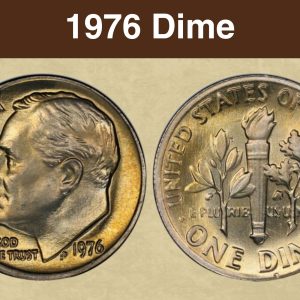
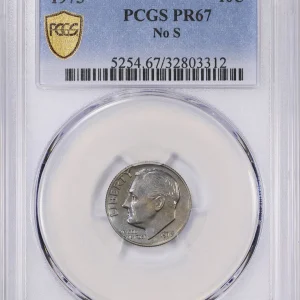
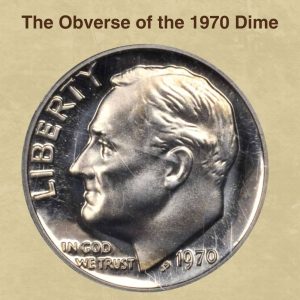
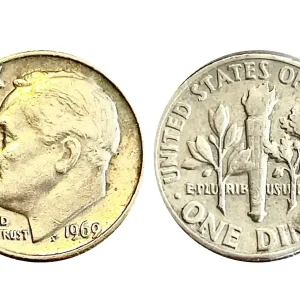
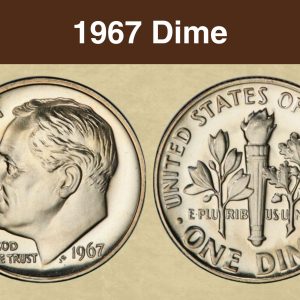
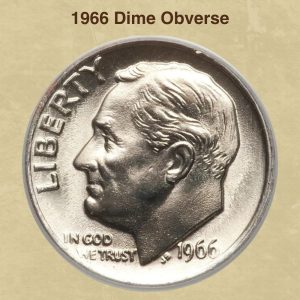
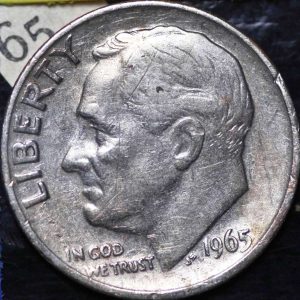
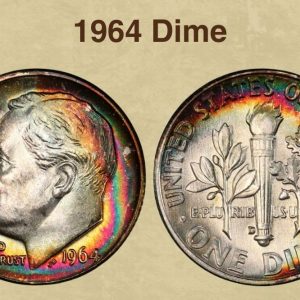
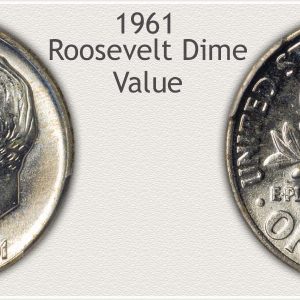
How much is a 1963 D dime worth today?
1963 D Roosevelt Dime Value According to the NGC Price Guide, as of October 2025, a Roosevelt Dime from 1963 in circulated condition is worth between $4.05 and $4.55. However, on the open market 1963 D Dimes in pristine, uncirculated condition sell for as much as $4500.
What errors to look for on dimes?
When looking for valuable dime errors, check for coins with a double die obverse, where features like the date or motto are doubled, as well as errors in the striking process, such as an off-center strike or a broadstrike where the collar is missing. Other errors include missing or clipped planchets, missing clad layers, or striking through debris like cloth (a strikethrough error ).
What makes a 1963 dime valuable?
The 1963-P Roosevelt Dime was made by the United States Mint. This coin was made out of silver (90%) so it does carry some precious metal value. Most coins melt price is around $1, depending on the current spot price of silver.
Which dimes with no mint mark are worth money today?
The 1968 no-S dime is a true rarity, and it is an example of one of the most dramatic Mint errors. In 1968, the Mint left the mint mark off the die when it was created in Philadelphia before being shipped to San Francisco to strike that year’s batch of dimes. These no-S dimes are extremely rare and very valuable.